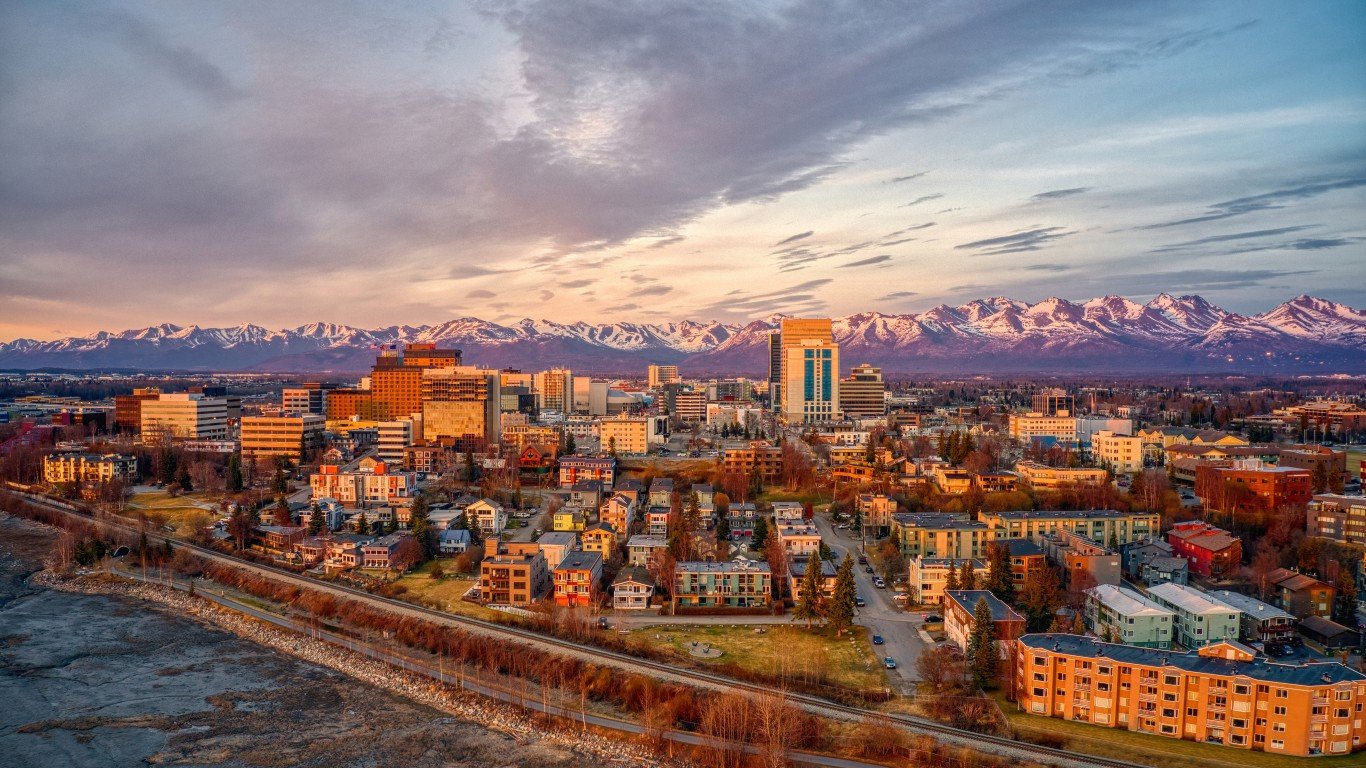
25. Alaska
> Population: 732,673 (-0.1% in last year)
> Life expectancy at birth: 78.6 years (23rd highest)
> Median household income: $77,845 (12th highest)
> Median home value: $304,900 (19th highest)
> Median housing costs as pct. of income: 17.8% (16th highest)
> August 2022 unemployment: 3.5% (24th highest)
The typical household in Alaska earns $77,845, more than in most states. Still, the cost of living in the state – particularly housing – is also higher than average. Median housing costs – considering both renters and homeowners – account for 17.8% of the income the typical household earns, compared to the 17.4% national ratio. Still, Alaskans benefit from a relatively strong job market, with an unemployment rate of just 3.5%, below the 3.8% national average.
Perhaps the most significant detractor to overall quality of life in Alaska is the prevalence of violent crime. There were 838 violent crimes in the state for every 100,000 people in 2020, the most of any state and more than double the national rate of 399 violent crimes per 100,000 people.
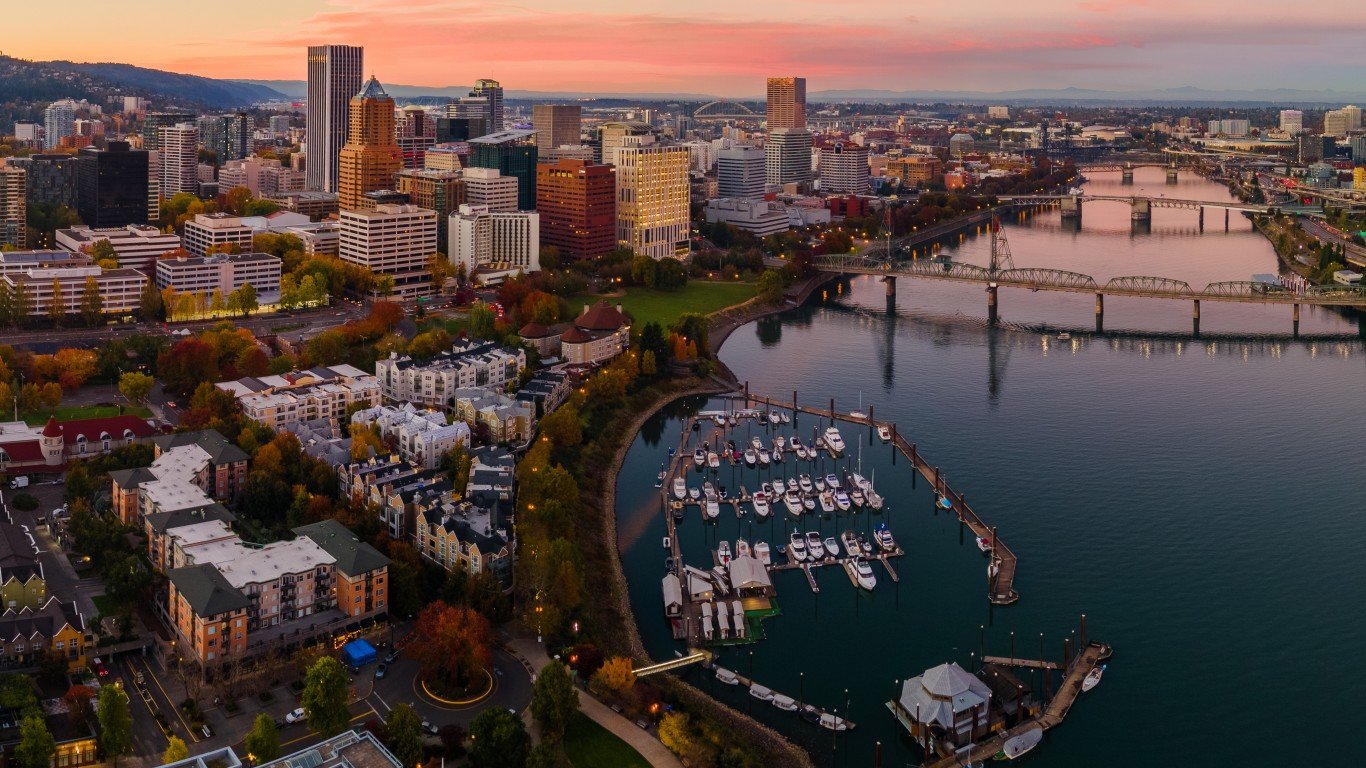
24. Oregon
> Population: 4,246,155 (+0.2% in last year)
> Life expectancy at birth: 79.7 years (10th highest)
> Median household income: $71,562 (18th highest)
> Median home value: $422,700 (6th highest)
> Median housing costs as pct. of income: 19.1% (7th highest)
> August 2022 unemployment: 4.3% (8th highest)
Oregon ranks near the middle of all states for overall quality of life. At $71,562, the state’s median household income is higher than in most states. However, the cost of living is also higher than average, particularly housing. Median housing costs – considering both renters and homeowners – account for 19.1% of the income the typical household earns, seventh highest among states and above the 17.4% national ratio. Oregon also has a relatively weak job market, with an August 2022 jobless rate of 4.3% – eighth highest among states.
While violent crimes like homicide and aggravated assault are less common in Oregon than they are nationwide, the same cannot be said of property crime such as burglary and motor vehicle theft. The state’s property crime rate stands at 2,659 incidents per 100,000, higher than in all but six other states.
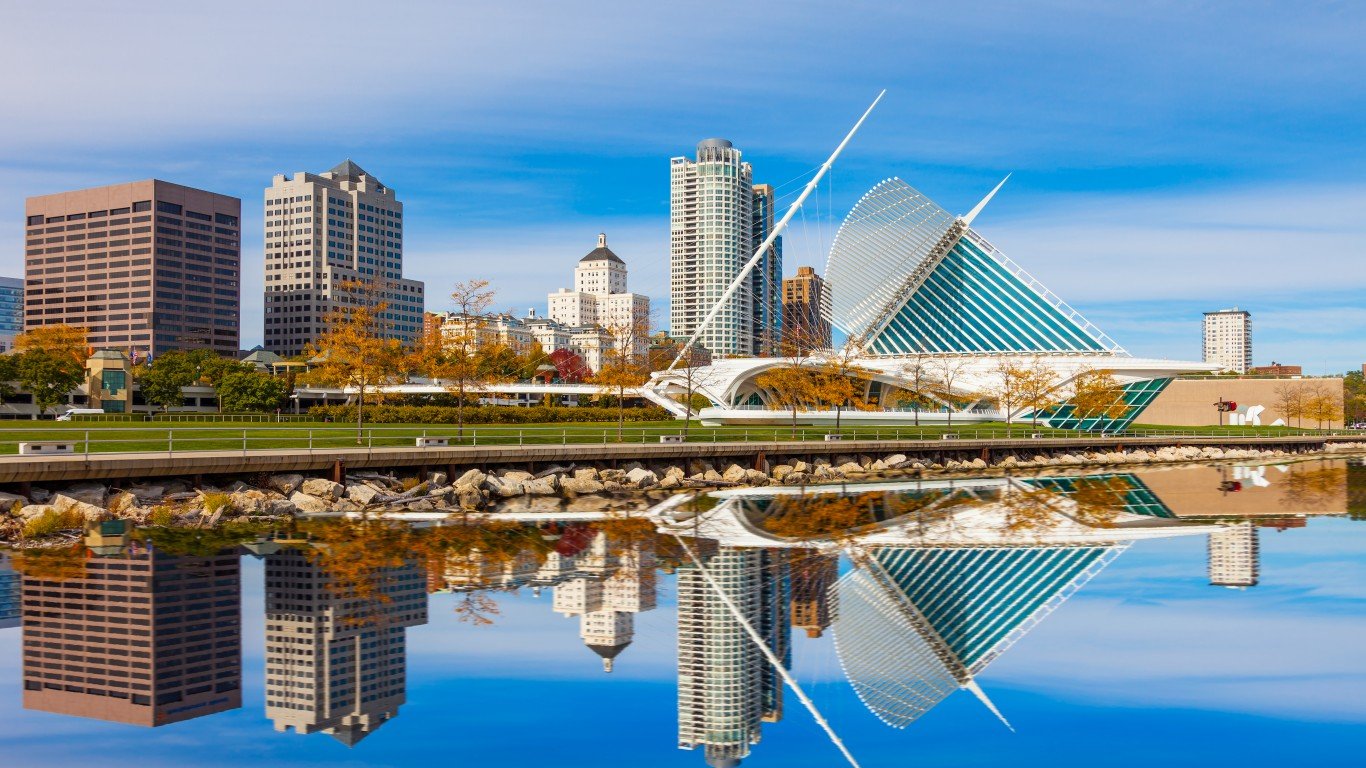
23. Wisconsin
> Population: 5,895,908 (+0.0% in last year)
> Life expectancy at birth: 78.9 years (20th highest)
> Median household income: $67,125 (22nd highest)
> Median home value: $230,700 (20th lowest)
> Median housing costs as pct. of income: 17.0% (22nd highest)
> August 2022 unemployment: 3.3% (22nd lowest)
Wisconsin ranks close to the middle of all states for overall quality of life. While the state gets less sunlight than most on average, it also has some of the cleanest air in the United States. It has one of the lower concentrations among states of microscopic particulate matter, which can reduce lung function and increase the risk of mortality from lung cancer and heart disease with long-term exposure.
Home values can be indicative of a place’s desirability, and in Wisconsin, the typical home is worth $230,700, $50,700 less than the typical American home nationwide. Still, at a time when income inequality is soaring in the United States, Wisconsin has some of the lowest income inequality nationwide. Additionally, the state’s August 2022 jobless rate of 3.3% is half a percentage point lower than the national rate.
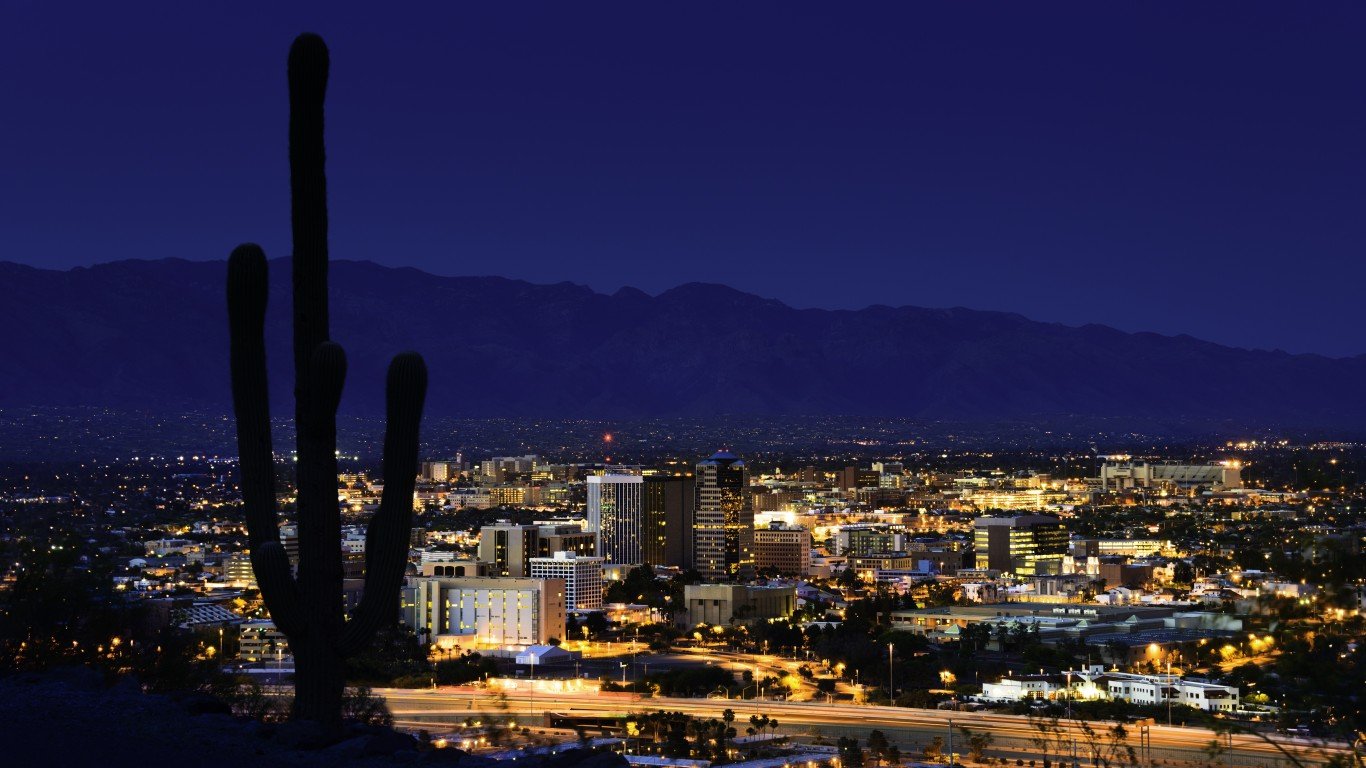
22. Arizona
> Population: 7,276,316 (+1.7% in last year)
> Life expectancy at birth: 79.1 years (18th highest)
> Median household income: $69,056 (20th highest)
> Median home value: $336,300 (15th highest)
> Median housing costs as pct. of income: 16.9% (23rd highest)
> August 2022 unemployment: 4.2% (12th highest)
Arizona is one of the fastest growing states in the country. Considering only net migration and excluding natural growth – births minus deaths – the state’s population expanded by 1.7% from 2020 to 2021, the third largest such increase of any state. The state’s attractiveness to newcomers may include its warm climate and the fact that it gets more sunlight, on average, than every other state. Other reasons may also be related to affordability. While home values are higher than average in Arizona, residents pay a smaller than typical share of their income for housing annually.
Arizona is not without some notable drawbacks, however. The state’s August jobless rate, for example, stands at 4.2%, well above the 3.8% national rate. Arizona also has higher rates of criminal violence than most of the country. With 485 violent crimes reported in the state for every 100,000 people in 2020, the state has one of the 10 highest violent crime rates nationwide.
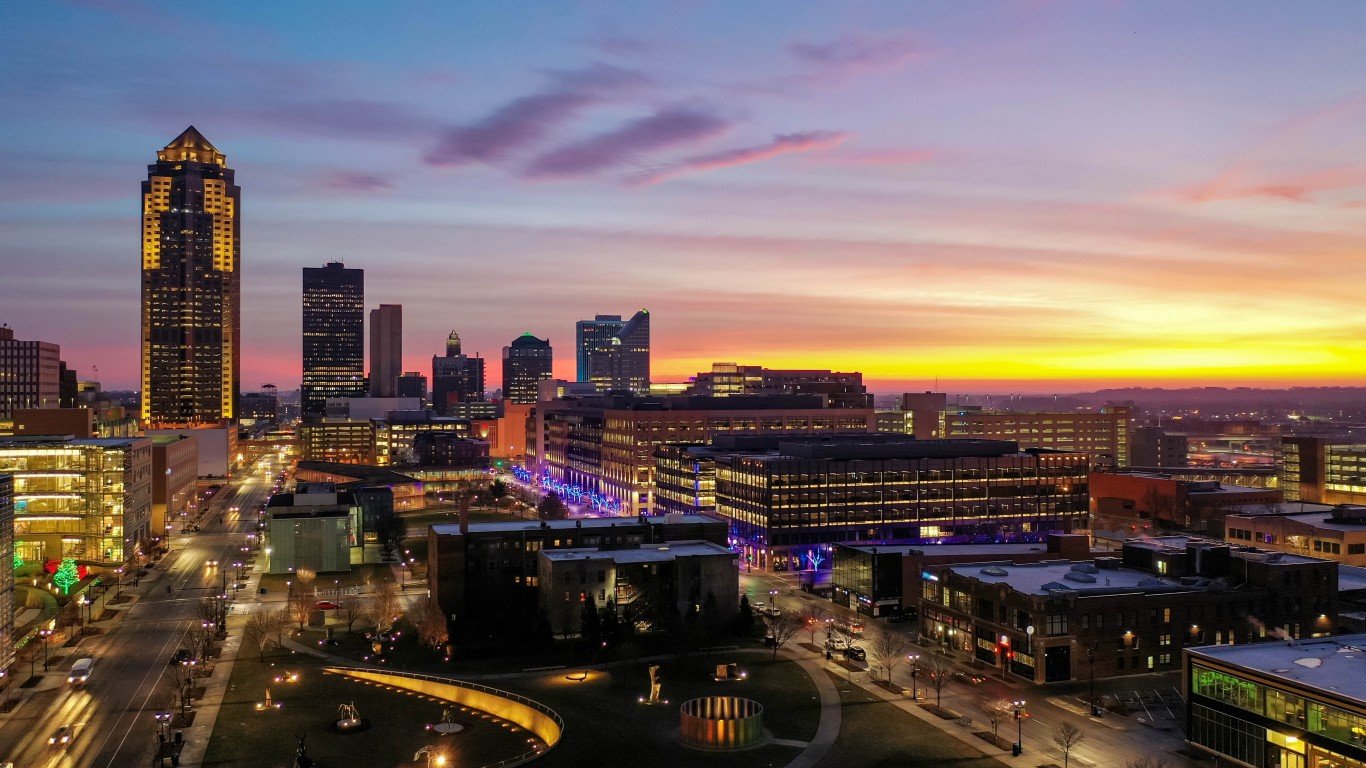
21. Iowa
> Population: 3,193,079 (+0.1% in last year)
> Life expectancy at birth: 78.7 years (22nd highest)
> Median household income: $65,600 (21st lowest)
> Median home value: $174,400 (7th lowest)
> Median housing costs as pct. of income: 15.9% (15th lowest)
> August 2022 unemployment: 2.9% (13th lowest)
Iowa ranks as the 21st best state to live in nationwide and the third best state in the Midwest. Though incomes in the state are generally lower than average, so, too, is the cost of living, particularly housing. Median housing costs – considering both renters and homeowners – account for only 15.9% of the income the typical household earns, below the 17.4% national ratio. Iowa also has a relatively strong job market, with only a 2.9% unemployment rate as of August 2022.
In some other key measures, however, Iowa lags behind much of the country. The state invests less in its school system than average, spending just $11,271 per pupil annually, the 20th lowest amount of any state. Additionally, only 72.7% of Iowa’s population have easy access to places for exercise, such as parks and recreation centers, compared to 79.8% of all Americans.





